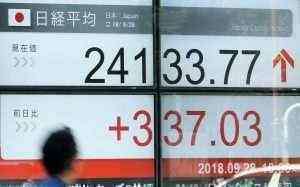
To effectively increase profits and mitigate unnecessary costs, brands need to improve demand forecasting and optimize their supply chains. The days sales in inventory metric can give brands critical insight into how long it takes to sell through their inventory and discover ways to optimize their inventory management process. It is important to stay on top of your order management and current inventory to ensure costs are being optimized.
In this article, you are going to learn how to calculate inventory turnover and inventory days. You will find the answer to the next four questions and a real example to understand the interpretation of this ratio better. If a company’s DSI is on the lower end, it is converting inventory into sales more quickly than its peers. Moreover, a low DSI indicates that purchases of inventory and the management of orders have been executed efficiently. Alternatively, another method to calculate DSI is to divide 365 days by the inventory turnover ratio.
Besides his extensive derivative trading expertise, Adam is an expert in economics and behavioral finance. Adam received his master’s in economics from The New School for Social Research and his Ph.D. from the University of Wisconsin-Madison in sociology. He is a CFA charterholder as well as holding FINRA Series 7, 55 & 63 licenses. He currently researches and teaches economic sociology and the social studies of finance at the Hebrew University in Jerusalem.
How to check average inventory days in Unleashed
A stock that brings in a higher gross margin than predicted can give investors an edge over competitors due to the potential surprise factor. Conversely, a low inventory ratio may suggest overstocking, market or product deficiencies, https://online-accounting.net/ or otherwise poorly managed inventory–signs that generally do not bode well for a company’s overall productivity and performance. The more liquid the business is, the higher the cash flows and returns will be.
Plus, analyzing these details can help prevent theft of obsolescence, increase cash flow, and reduce costs. A retail corporation, such as an apparel company, is a good example of a company that uses the sales of inventory ratio to determine the cost of inventory. The inventory turnover calculator is a financial efficiency ratio calculator that uses the inventory turnover formula and inventory days formula to understand how fast a company sells its inventory in a certain period. If tracked on a trend basis, it can show investors whether management strategies are improving the efficiency of their production, manufacturing, or selling process or not. DSI is also known as the average age of inventory, days inventory outstanding (DIO), days in inventory (DII), days sales in inventory, or days inventory and is interpreted in multiple ways.
The interpretation of the days in inventory indicator
Irrespective of the single-value figure indicated by DSI, the company management should find a mutually beneficial balance between optimal inventory levels and market demand. One must also note that a high DSI value may be preferred at times depending on the market dynamics. Otherwise it may be a signal that the company is registering a decline in sales or that it expanded its inventory in a more pronounced trend in comparison to the sales figure. But the COGS value could also be obtained from the annual financial statement. Keep in mind that it’s important to include the total of all categories of inventory. In order to manufacture a product that’s sellable, companies need to acquire raw materials as well as other resources.
- As per its definition, inventory is a term that refers to raw materials for production, products under the manufacturing process, and finished goods ready for selling.
- As a ratio between your average inventory size and your rate of sales, it can additionally help you see if these numbers are healthy in relation to one another.
- We’ll assume the average inventory days of our company’s industry peer group is 30 days, which we’ll set as our final year assumption in 2027.
- If the historical inventory days metric remains constant, the historical average can be used to project the inventory balance.
If a company sells more goods than it does services, days sales in inventory would be a primary indicator for investors and creditors to know and examine. The days sales of inventory (DSI) is an important financial ratio and metric that helps indicate how much time in days that it takes a company to turn its inventory. Essentially, it measures how efficiently a company can turn the average inventory it has into sales. Days sales in inventory is also important to track because it’s another metric that can help brands tell how efficient their inventory management is. Inventory costs are a huge part of a brand’s overall costs, which is why it’s critical for brands to ensure an efficient inventory management process.
What is the meaning of days of inventory?
DSI can also measure the demand for inventory, the speed of the cash conversion cycle, how effectively a business manages its inventory, and a brand’s cash flow. Days sales in inventory (DSI) measure how much time is necessary for a company to turn its inventory into sales. To calculate your DSI, you’ll need to have clear and accurate records of the value of your inventory, costs and sales for the period in question. For investors, DSI allows them to gain greater insight into the performance of a business. Earlier in this article, we mentioned that having a low DSI is preferable for most, because it means that stock is moving quickly through the business – sales are good and inventory is being held at the right level.
How to Calculate and Interpret Inventory Turnover – Practical Ecommerce
How to Calculate and Interpret Inventory Turnover.
Posted: Wed, 18 Mar 2020 07:00:00 GMT [source]
As mentioned above, there are many variables that affect what a good DSI looks like, as it depends on the industry you’re in, the characteristics of the goods you’re selling, and your business model. So while you can look at DSI in isolation, it can also be helpful to combine it with those other two measurements. But on its own, DSI allows you to have greater visibility over the inventory in your business, to see whether you have too much on hand, or aren’t carrying enough – which means you’re having to continually reorder.
From determining the DIO of each brand, you can easily see which brands are doing well relative to other brands. In this case, Brand 2 is doing extremely well, while Brands 1,3, and 4 are all lagging about equally behind. The manager may then meet with the sales and marketing team to try to figure out how to improve sales of those brands. The company might consider dropping Brand 3, the poorest performer, entirely.
Inventory turnover as a financial efficiency ratio
We’ll now move on to a modeling exercise, which you can access by filling out the form below. Rachel is a Content Marketing Specialist at ShipBob, where she writes blog articles, eGuides, and other resources to help small business tax write off owners master their logistics. Love that you can view orders based on when they are processing, completed, on hold, and in other stages. It is super helpful for us to have that and track the order every step of the way.

The following two companies develop and sell semiconductor chips for diverse applications like phones, cars, and computers. Then, when we have the values for 3 to 5 years, we can conclude whether the efficiency increases or decreases. First, we will start talking about why we do not have to look at the ratio and the days and not to analyze it independently. Allison Champion leads marketing communication at Flowspace, where she works to develop content that addresses the unique challenges facing modern brands in omnichannel eCommerce. She has more than a decade of experience in content development and marketing. While the average DSI depends on the industry, a lower DSI is viewed more positively in most cases.
Obtaining all of this helps to form and develop the inventory they have, but it comes at a cost. Plus, there are always going to be costs linked to manufacturing the product that uses the inventory. This worsening is quite crucial in cyclical companies such as automakers or commodity-based businesses like Steelmakers. If the company is stockpiling, quarter by quarter, more and more stock, a problem is definitely developing, and if you own shares in those cases, it might be better to consider selling and taking profits. Once we sell the finished product, the company’s costs for producing the goods have to be recorded on the income statement under the name of cost of goods sold or COGS as it’s usually referred to. Note that depending on your accounting method, COGS could be higher or lower.
Here’s Why Both Ford and GM Have Shut Down Pickup Production – Autoweek
Here’s Why Both Ford and GM Have Shut Down Pickup Production.
Posted: Tue, 28 Feb 2023 08:00:00 GMT [source]
If you are interested in learning more about liquidity, how to track it, and other financial ratios, check out our two tools current ratio calculator and quick ratio calculator. For example, in 2019, Walmart reported $385.3 billion in annual costs of goods sold and an average inventory of $44.05 billion. On the other hand, if you have a high turnover ratio and low days of sales, you probably sell stock quickly. This means that it’s especially important to have good inventory management processes in place to keep up with demand. Your customers will expect prompt service without stockouts, no matter how busy the business is.
While DII is useful for helping you get a broad picture of your company’s inventory management, it’s only part of the story. While it’s true that a lower DII is typically better, there are plenty of situations in which a business may make a choice that increases its DII. For example, if the supply of your product has recently been unstable, you may choose to increase inventory of it to avoid restocking issues. If you sell tangible goods, you know how difficult it can be to get your inventory levels just right.
What do DSI and turnover ratios mean?
Based on the recent downward trend from 40 days to 35 days, the company seems to be moving in the right direction in terms of becoming more efficient at clearing out its inventory quickly. To time inventory replenishment correctly, you need to calculate reorder points and safety stock carefully every time. For example, a drought situation in a particular soft water region may mean that authorities will be forced to supply water from another area where water quality is hard.
